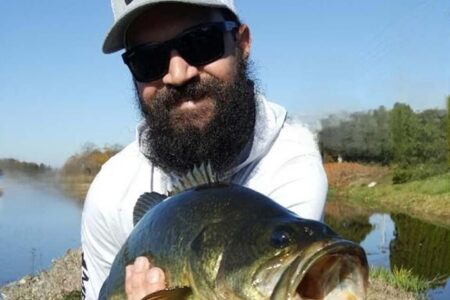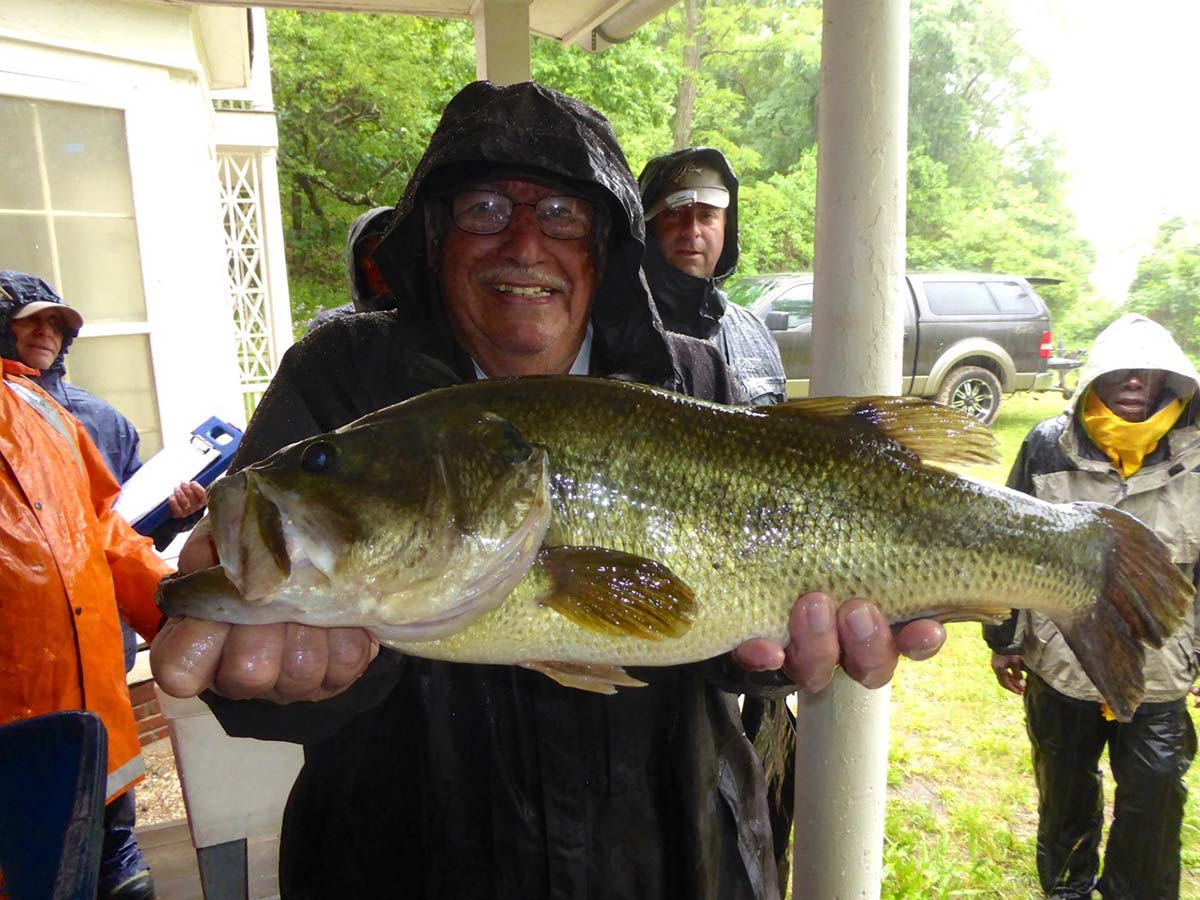
A jig is the best way to entice a vicious strike from a lunker largemouth.
Bass love ambush points, and if you fish Long Island for largemouths, you know we have a ton of lakes with many ambush points. Downed trees, aquatic growth, and lily pad after lily pad are all readily available in most lakes and ponds on Long Island. Last year Ken Bliss drilled an estimated 7-plus pounder from a lake I grew up fishing – Brookwood Hall. Fish this large show up yearly, with a lot coming from plastic worms like the Yum Dinger or Senko. Some have even succumbed to live bait. However, most of my larger fish (over 5 pounds) have been caught on a jig. A jig is a surefire way to get to the lunker’s hangout, present an eatable target, and entice vicious strikes.
The Hideouts
Pick any lake in our region, and you can find a likely hideout for big bass. Pick a lake with a good trout population, and you can stumble on a new state record. Yes, I said state record. I believe somewhere on Long Island is the next state record largemouth. I have spoken to anglers that have seen trophy largemouths cruising the shoreline, only to disappear when they try to catch them! They didn’t get that big by being stupid.
For me, I like shallow water cover close to shore. Take for instance, West Lake in Patchogue. Even after they cleaned up the shoreline, there are still several downed trees, plus lily pads galore. Over at Forge Pond, the overgrowth near the dam and along the eastern shoreline allows the bass to stay in the shadows, waiting to pounce. One of the best big bass hangouts is Blydenburgh Lake. This lake has good access and tons of blown-down trees and lily pads. The bottom line is: don’t just look for one particular cover. Look at all possible cover situations – they will vary from lake to lake – and some lakes will have multiple cover areas.
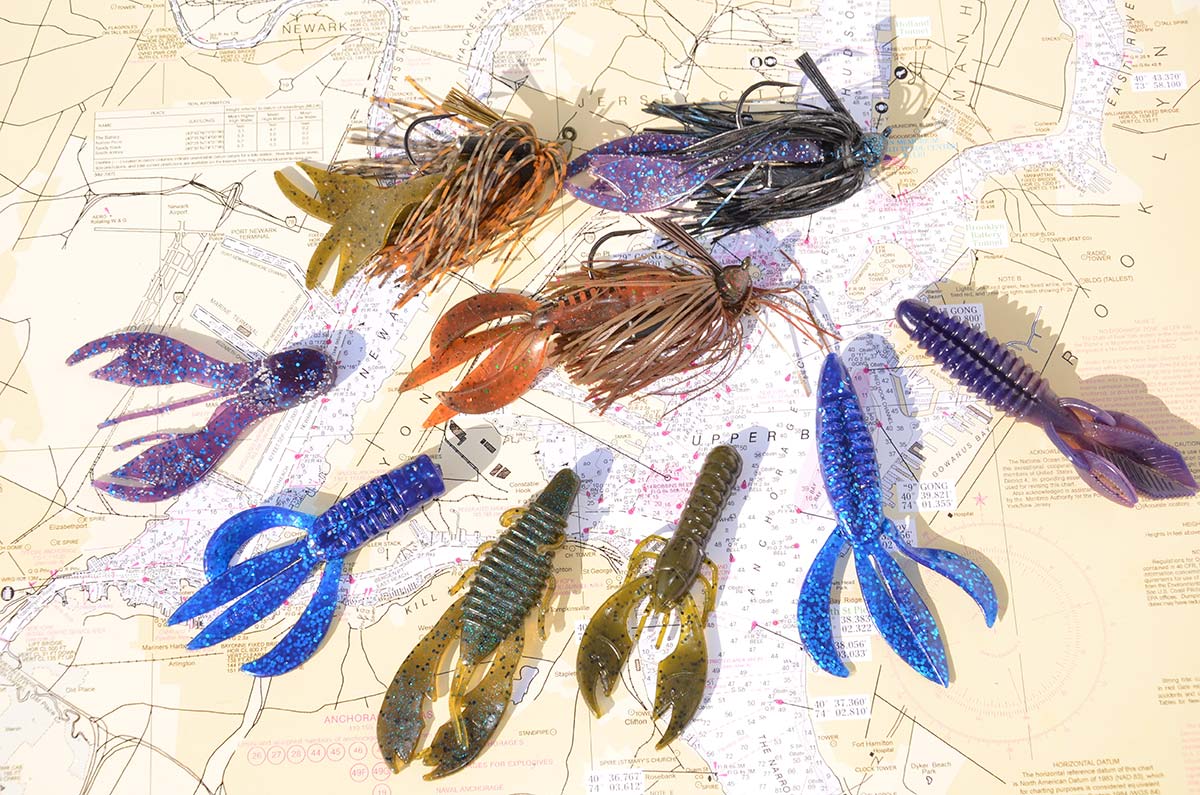
Their Diet—Match It!
Largemouth bass feed on just about anything, from tiny insects to larger prey in the form of birds and everything in between. They absolutely love frogs, crayfish, small baitfish, and trout. Although we may not have a considerable crayfish population, a jig is not necessarily imitating just a crawfish.
There is no secret that I am a fan of the color blue. Give me a 3/8-ounce Strike King jig and any style trailer in blue, and I’ll catch fish anywhere on Long Island. Over the last several years, however, I have been playing with other colors – orange and green pumpkin. The difference in the color is subtle, but the trailer is the key. Small bluegills, pumpkinseeds, and even perch are colorful. Mix up the trailer color, and you have a baitfish. I’ll use blue with orange or red, green with blue or yellow, and blue/blue, green/green as old reliable. Orange resembles crayfish more than most colors and is a killer in the early parts of summer.
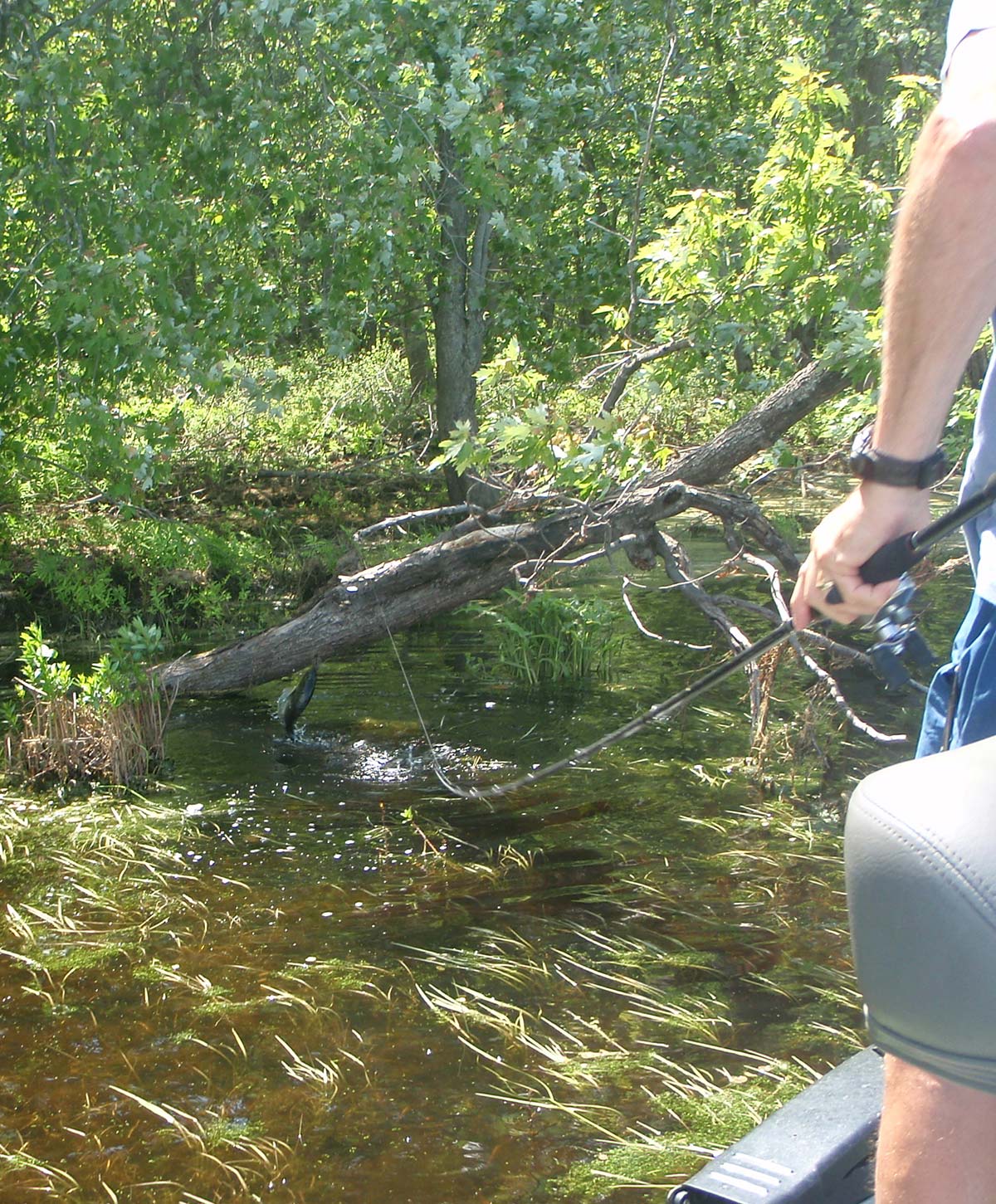
The Technique
For technique, using a jig for bass can be done in several styles. For starters, you can simply swim the jig slowly across the open bottom adjacent to structure. When employing this method, stick with these color combos – green/yellow, blue/red, and chartreuse/yellow. These colors will imitate a small baitfish.
Another method would be to cast to a lily pad field 20 to 30 feet off the bank. The key here is to cast, then slow your line down, so the jig does not “plop” into the water, making a huge commotion. After the jig lands, allow it to settle to the bottom, then after several seconds, twitch the rod tip, wait again, and repeat the process. After several attempts, reel and re-cast to another spot on the pads.
The third, and my favorite, is the drop and hook method. I fish fast – hundreds of casts – all day long. I am also a firm believer that bass sometimes will not move very far to eat. While working a stump field, lily, or underwater growth, I pitch the jig, allow it to fall, and then give one quick twitch. If I get no action, I pitch again, moving only a foot or two from the last pitch. Most times, the bass will hit your jig either on the fall or just as it has hit bottom. When fishing wood, try to detect a bass’s thump instead of sticking the wood. If you master this, snags will also become less of an issue.
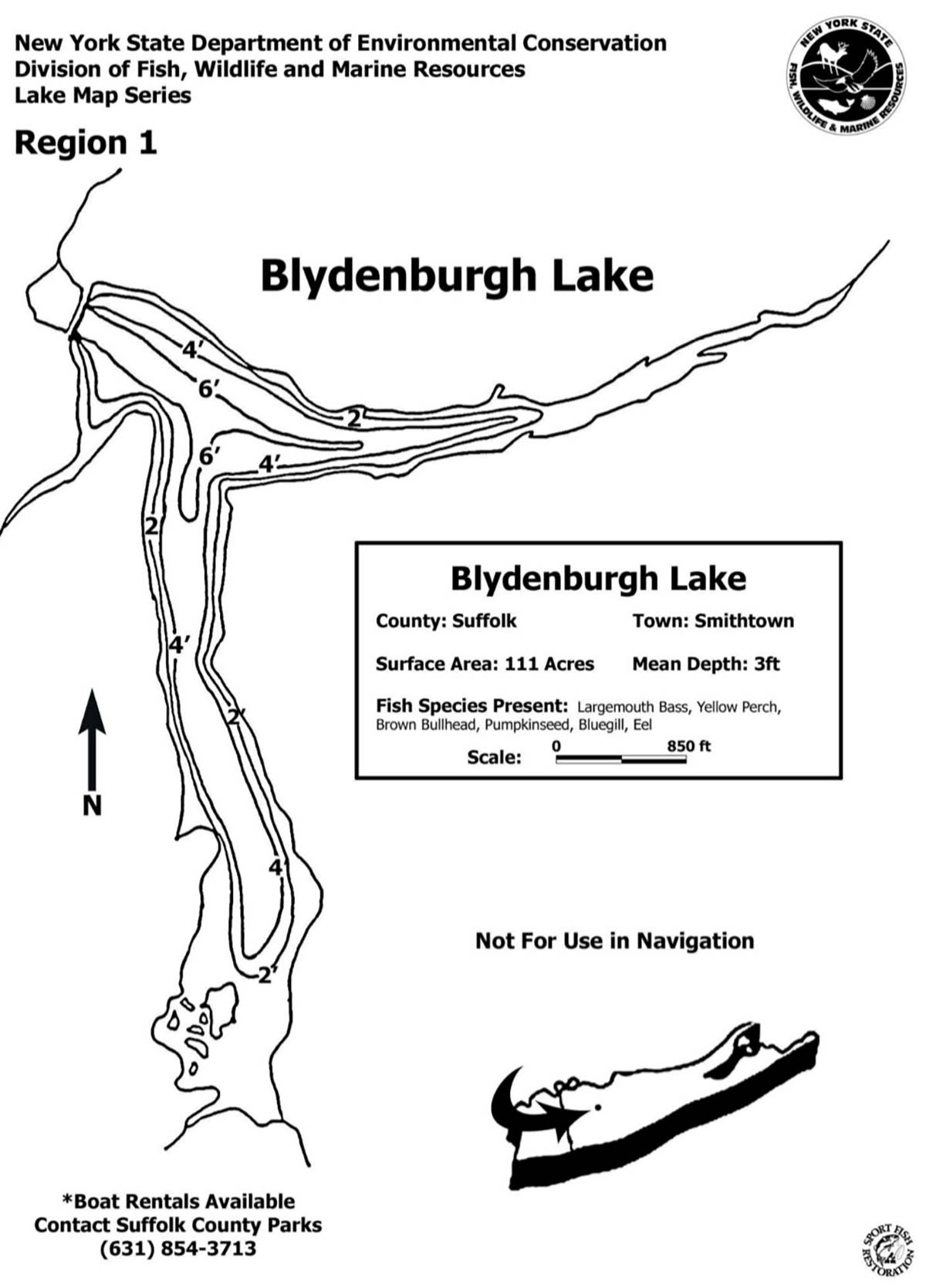
Beef It Up
For tackle, there is only one rule – leave the wimpy stuff home. Light tackle and light line has no place in the jig world. In fact, on trout ponds, I have caught a ton of bass with light wire hooks still embedded from trout anglers not being able to land a lunker due to break-offs.
Over the last several years, I have used a lot of KastKing rods and reels. This year I used their new baitcaster Speed Demon Elite Deadbolt, which has no drag! I do not need drag when jig fishing; I want lock and load. On the rod end, I have two I like. The Abu Garcia VTPCW76-6, rated for 1/2 to 1-3/8 ounces, and the KastKing KRDCSTRS-73H1, rated for 1/4 to 1-1/2 ounces, and is 3 inches shorter. The Abu comes in slightly longer, which enables me to reach and work the jig when making slightly longer casts. The KastKing is best for short pitching to holes close to the bank or boat if you are using one. In either case, 30 to 40-pound braid is the best line – directly tied to the jig.
| THINK LIKE BAIT |
| A properly adorned jig can resemble a small bluegill. Keep in mind baitfish are not always swimming around in circles. They suspend just like other fish. A well-placed jig will resemble a holding baitfish, and largemouths will pounce if it’s within striking distance. |
Heavier tackle will virtually guarantee that you land the fish. Remember, you’re throwing your offering into his lair. He knows how to get out, and he knows how to evade and destroy. Once hooked, believe me, bass will wrap you around anything it can find. Beefed-up tackle will allow you to gain control and not let him wrap up. If he does, however, you still can keep pressure on the fish and either go get her (if you’re in a boat) or swing him over and under branches, through lilies, or from under stumps.
Long Island anglers can find lunker largemouths from the NY City line all the way out to Montauk. We have bass in virtually every body of water, including some of the brackish areas. The key to our population is that most anglers will not remove the fish from the water for dinner or to show it off. Carry your camera and a good digital scale so that when you land that lunker this year, you can save the memory and ensure you can catch her again next year.



